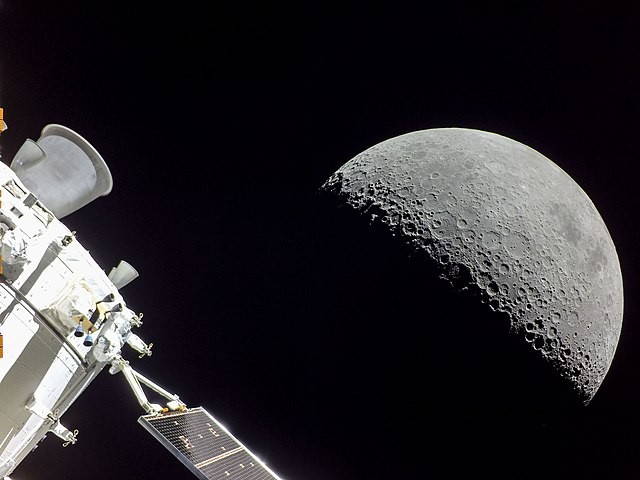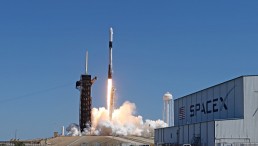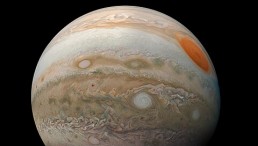
(Photo : Wikimedia Commons/NASA Johnson)
NASA plans to bring more moon rovers to the lunar surface. However, they will not be available until Artemis VII.
NASA To Bring More Moon Rovers
NASA and its partners will send large pieces of equipment to the lunar surface as part of the Artemis campaign, which aims to further long-term scientific exploration of the Moon for the benefit of all. To meet these needs, SpaceX and Blue Origin, NASA's suppliers of human landing systems, are starting to build lunar landers for heavy cargo delivery.
NASA has asked SpaceX and Blue Origin to construct cargo versions of their human lunar landers as an option under their current contracts. NASA has contracted both companies to produce landing systems to send men to the Moon's surface from lunar orbit, starting with Artemis III.
These cargo variations are anticipated not to enter operation before the Artemis VII mission and will land between 26,000 and 33,000 pounds (12 to 15 metric tons) of payload on the lunar surface.
According to Lisa Watson-Morgan, Human Landing System Program Manager at NASA's Marshall Space Flight Center in Huntsville, Alabama, for maximum return on science and exploration activities, NASA must be able to land not only astronauts but also large pieces of equipment, such as pressurized rovers, on the Moon.
Starting this effort now will enable SpaceX and Blue Origin to take advantage of their designs for human landers to produce cargo variations that NASA will require later.
NASA anticipates that the companies' landers with cargo will be modified versions of the human landing systems now under development for Artemis III, IV, and V. The modifications will involve changes to the deployment mechanisms and payload interfaces, and the cargo variants will not be equipped with human life support systems.
By completing this preliminary work, the companies can proceed with the development of their cargo landers. An initial design review lays the groundwork for a detailed design. NASA formally exercised the options under those contracts in November 2023 to start development on the massive cargo landers. SpaceX is working under the NextSTEP Appendix H contract, and Blue Origin is under the NextSTEP Appendix P contract.
ALSO READ: Delaying Crewed Moon Mission Was Right Decision, Artemis 2 Astronaut Explains
NASA Artemis III Update
The Government Accountability Office (GAO) announced in December 2023 that Artemis III is unlikely to take place before 2027. As of January 2024, NASA officially anticipates that the moon mission will launch no earlier than September 2026 because of problems with the valves in Orion's life support system.
In March, NASA announced that it had already selected the first lunar instruments for the Artemis III mission. During the Artemis III mission, the US space agency chose three instruments to be installed close to the lunar South Pole. They will gather critical scientific data about the lunar environment and interior and methods for maintaining a long-term human presence on the Moon.
According to NASA Deputy Administrator Pam Melroy, science enters a daring new era of exploration with the Artemis mission, in which human presence accelerates scientific advancement. She added that they were embarking on a transformative journey with these innovative instruments stationed on the Moon's surface that will kick-start the ability to conduct human-machine teaming.
These three deployed equipment aims to initiate scientific studies addressing important science objectives related to the Moon and Mars. The instrument will address three research objectives of Artemis -- (1) comprehending planetary dynamics, (2) comprehending the nature and source of lunar polar volatiles, and (3) assessing and reducing mission risks.
They were specifically chosen due to their special installation requirements, which are needed for human deployment during moonwalks. The three payloads have been chosen for additional development and will be launched on Artemis III in 2026.
RELATED ARTICLE: Metallic Flying Saucer That Comes Out From Cloud 'Definitive Proof' We Are Not Alone, UAP Hunter Claims
Check out more news and information on Space in Science Times.














